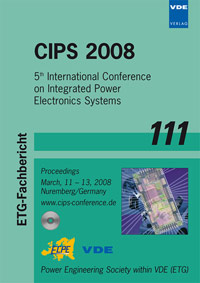Trade-off between energy savings and execution time applying DVS to a microprocessor
Konferenz: CIPS 2008 - 5th International Conference on Integrated Power Electronics Systems
11.03.2008 - 13.03.2008 in Nuremberg, Germany
Tagungsband: CIPS 2008
Seiten: 5Sprache: EnglischTyp: PDF
Persönliche VDE-Mitglieder erhalten auf diesen Artikel 10% Rabatt
Autoren:
Vasic, Miroslav; García, Oscar; Alou, Pedro; Oliver, Jesús A.; Cobos, José A. (Universidad de Politécnica en Madrid, Centro de Electrónica Industrial, Spain)
Inhalt:
DVS (Dynamic Voltage Scaling) is a technique used for reducing the power consumption of microprocessors. The power consumed by these circuits has a main component (dynamic power) that is proportional to the square of the supply voltage. Additionally, for every supply voltage, there is a maximum value of the clock frequency. The advantage of using DVS is that the supply voltage (and hence clock frequency) can be adjusted depending on the specific needs during execution. The DVS concept has been used in some commercial products like Transmeta’s Crusoe [1], Intel Speed Step [2], AMD K6 [3], Hitachi SH4 [4], etc. The DVS algorithm proposed in this work is based on the trade-off between the application’s execution time and the energy consumed by the microprocessor. Indirectly, by controlling the execution time the consumed energy is controlled as well. Longer execution time provides less energy demanded by the CPU. The algorithm has been implemented on a platform with an Intel XScale PXA255 microprocessor and the energy saving has been calculated directly measuring currents and voltages on the platform. Using this technique it is possible to achieve up to 50% of power savings, with 50% longer execution time.


